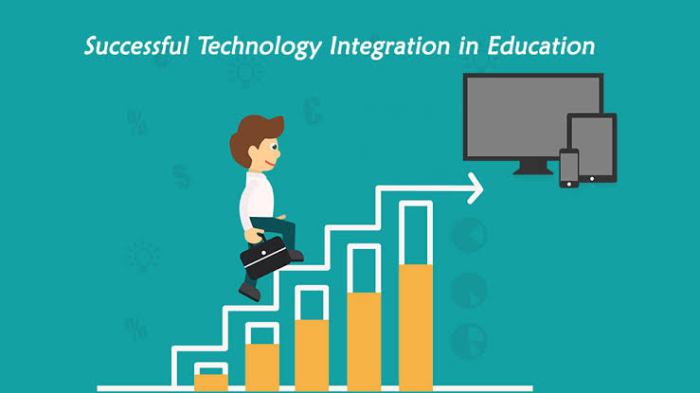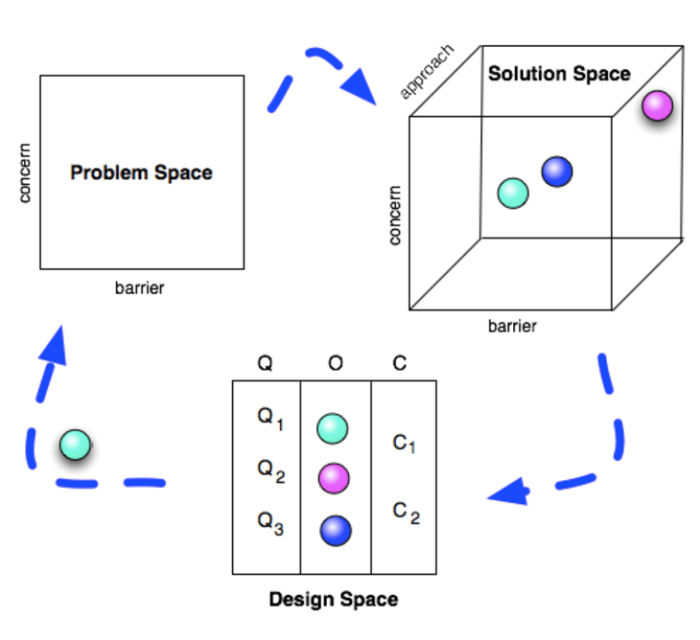Equity concerns regarding the integration of technology revolve around a complex interplay of factors, including access, representation, algorithmic bias, data privacy, employment impact, and accessibility. This article delves into these issues, examining their implications and exploring strategies for addressing disparities and promoting equity in the digital age.
As technology becomes increasingly pervasive in our lives, it is crucial to ensure that its benefits are distributed fairly and that potential risks are mitigated. This comprehensive analysis provides insights into the multifaceted nature of equity concerns in technology integration, offering valuable guidance for policymakers, industry leaders, and advocates seeking to create a more just and inclusive digital society.
Access to Technology

Technology is not equally distributed across society. This can lead to inequities in education, employment, and other areas.
Socioeconomic Factors
- Individuals from low-income households are less likely to have access to computers and the internet.
- This gap can limit their educational opportunities and job prospects.
Geographic Factors
- People living in rural areas often have less access to high-speed internet than those in urban areas.
- This can make it difficult for them to participate in online education and job training programs.
Government and Other Organizations
- Government and non-profit organizations can play a role in addressing these disparities.
- They can provide funding for technology access programs and support community-based initiatives that promote digital literacy.
Representation in Technology
Certain groups are underrepresented in the tech industry. This lack of representation can lead to biased algorithms and products.
Statistics and Research
- Women and minorities are underrepresented in tech companies.
- This underrepresentation is reflected in the products and algorithms that are developed.
Biased Algorithms
- Algorithms can be biased if they are trained on data that is not representative of the population.
- This can lead to discriminatory outcomes, such as hiring or lending decisions that are biased against certain groups.
Initiatives for Diversity and Inclusion, Equity concerns regarding the integration of technology revolve around
- There are a number of initiatives aimed at increasing diversity and inclusion in the tech sector.
- These initiatives include mentorship programs, scholarships, and outreach programs.
Algorithmic Bias

Algorithmic bias refers to the unfair or discriminatory outcomes that can result from the use of algorithms.
Definition
- Algorithmic bias occurs when an algorithm is trained on data that is not representative of the population.
- This can lead to the algorithm making unfair or discriminatory decisions.
Examples
- A facial recognition algorithm that is trained on a dataset that is predominantly white may be less accurate at recognizing faces of people of color.
- A resume screening algorithm that is trained on a dataset of resumes from white men may be less likely to select resumes from women or minorities.
Consequences
- Algorithmic bias can have a significant impact on individuals and society.
- It can lead to discrimination in hiring, lending, and other areas.
Data Privacy and Surveillance
The collection and use of personal data can raise equity concerns.
Data Breaches
- Data breaches can expose personal information to unauthorized individuals.
- This can lead to identity theft, fraud, and other harms.
Discrimination
- Personal information can be used to discriminate against individuals.
- For example, data brokers may sell personal information to employers who use it to make hiring decisions.
Best Practices
- There are a number of best practices that can be used to protect data privacy and prevent surveillance abuse.
- These practices include using strong passwords, being cautious about what information is shared online, and using privacy-enhancing technologies.
Impact on Employment
Technology can have a significant impact on the job market.
Job Displacement
- Technology can lead to job displacement as machines and algorithms automate tasks that were previously performed by humans.
- This can have a negative impact on workers who are displaced from their jobs.
New Opportunities
- Technology can also create new opportunities for workers.
- For example, technology can create new jobs in fields such as artificial intelligence, data science, and cybersecurity.
Strategies for Mitigation
- There are a number of strategies that can be used to mitigate the negative effects of technological change on employment.
- These strategies include providing job training and retraining programs, and investing in infrastructure and education.
Accessibility and Usability

Technology should be accessible to people with disabilities.
Importance of Accessibility
- People with disabilities should have the same access to technology as everyone else.
- Accessible technology can help people with disabilities live independently and participate fully in society.
Challenges and Solutions
- There are a number of challenges to making technology accessible.
- These challenges include designing websites and apps that are easy to use for people with disabilities, and providing assistive technologies such as screen readers and closed captioning.
Assistive Technologies
- Assistive technologies can help people with disabilities use technology.
- Examples of assistive technologies include screen readers, closed captioning, and speech recognition software.
FAQ Explained: Equity Concerns Regarding The Integration Of Technology Revolve Around
What are the main equity concerns in technology integration?
Equity concerns in technology integration include unequal access to technology, underrepresentation of certain groups in the tech industry, algorithmic bias, data privacy and surveillance, impact on employment, and accessibility for people with disabilities.
How can we address equity concerns in technology integration?
Addressing equity concerns in technology integration requires a multifaceted approach that includes implementing inclusive policies, promoting diversity and inclusion, mitigating algorithmic biases, protecting data privacy, investing in accessible technologies, and empowering workers.